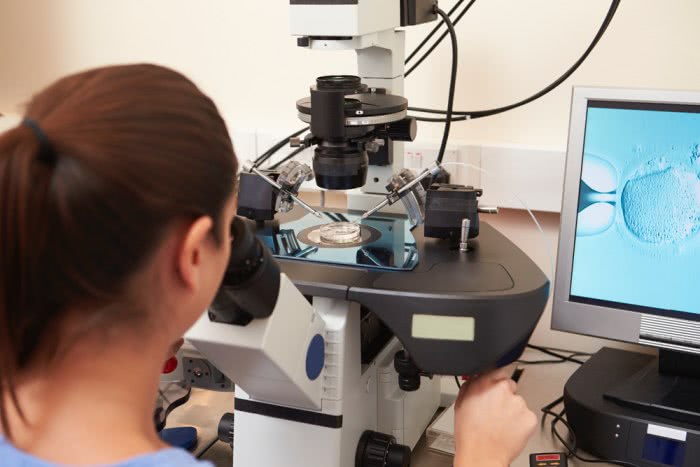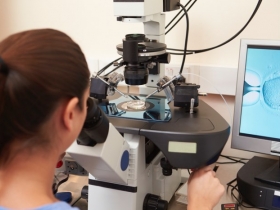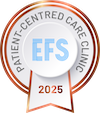IVF Methods, Part 2 – Embryoscope, assisted hatching and much more.
Second part of the IVF Methods article. The GYNEM clinic offers a large number of methods, more of which are presented here.
1 – Embryoscope
An embryoscope is a device that allows doctors to continuously monitor embryos under a microscope that is placed directly in the incubator. In addition to the quality of sperm, it is very important to choose the right embryo for transfer to the uterus. Use of the embryoscope means that it is not necessary to manipulate or move embryos in order to find the right one. Embryos can be left undisturbed, allowing them to develop, while the one with the best chance of success is chosen.
2 – Cultivation and extended cultivation
Cultivation occurs in laboratory conditions after an egg has been fertilised, and means the transfer of embryos to the uterus. This usually occurs on the second or third day of development, but the appropriate period is always determined by the embryologist. This period can be longer, depending on the specific situation.
If the period is extended, it is known as extended cultivation. It can be extended for up to five days. During this period embryos develop in a special environment. Prolonging development allows doctors to select the highest-quality embryos.

3 – Assisted hatching
Assisted hatching increases the chances of the embryo nesting in the uterus. With this method, on the fourth day of embryo cultivation the egg’s protective envelope is opened with a laser, which greatly facilitates its nesting. The opening of the envelope is a gentle procedure that doesn’t take long and doesn’t jeopardise the condition and lifespan of the embryo.
4 – EmbryoGlue and EmbryoGen
EmbryoGlue is the name for a special tissue adhesive that helps the transferred embryo to nest. It contains all the necessary nutrients and energy sources that the embryo needs, and greatly increases the number of children born.
EmbryoGen serves as an aid to cultivation in the laboratory. It helps to create an environment that resembles natural conditions and also contains its essential elements, such as growth factors that control the body's immunity. It has a highly positive, demonstrable effect on women who have had miscarriages.
5 – PGD / PGS
These methods are used to detect genetic defects and examine embryos from a genetic point of view. They allow the timely identification of potential complications and the prevention of miscarriages, which occur in the first trimester due to genetic defects. Seventy-two hours after fertilisation of the embryo, several cells are gently harvested and analysed. Analysis poses no risk to the embryo. Subsequently, the analysis is assessed by a geneticist, who proposes which embryos are suitable for transfer to the uterus. This will significantly reduce the risk of giving birth to a child with a genetic defect.
PGD, or preimplantation genetic diagnosis, is offered to parents who have a hereditary condition in their family.
PGS, or preimplantation genetic screening, is used to rule out genetic defects in the embryo. It is recommended for couples whose previous IVF procedures have not been successful.
As already mentioned, different procedures are appropriate for different people and it is necessary to consult experts. At the GYNEM clinic you can contact a doctor with all your questions and find out which method or combination of methods is right for you.
*This article is translated from Czech original to English language by translation agency Marvel, s. r. o.






